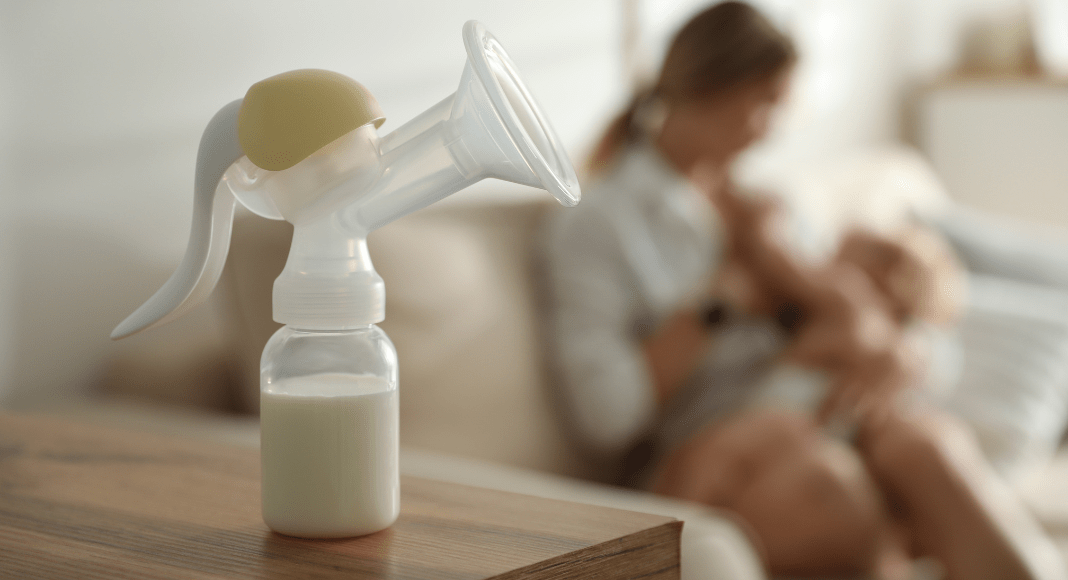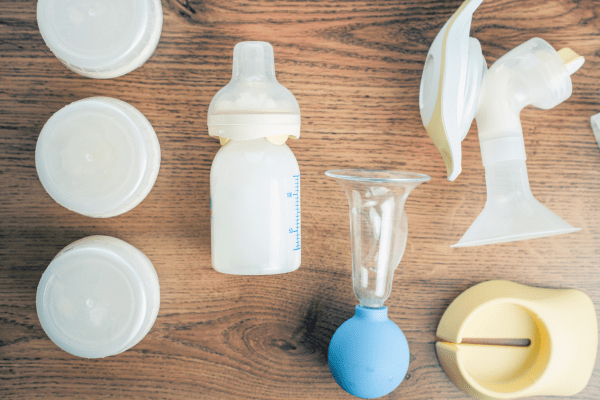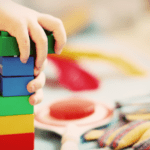
National Breastfeeding Awareness Month is a time to celebrate all breastfeeding journeys—including parents who feed their babies breastmilk with the help of a pump.
Every pumping journey is unique. Some parents choose to pump so that a partner can share feeding responsibilities, or to continue breastfeeding while returning to work. For others, pumping is a way to give their baby breastmilk when nursing isn’t an option, such as during a NICU stay, or when a baby is facing ongoing medical or nursing challenges. Some parents pump exclusively, while others pump in combination with nursing or formula-feeding. Some journeys are brief, while others span months or even years.
No matter what your journey looks like, pumping is a valid, meaningful, and important breastfeeding option. But there is no denying that it comes with its own unique set of challenges. Whether you always planned to pump, or are embarking on your pumping journey unexpectedly, here are eight tips that you can implement early on to make the journey ahead a bit easier.
1. Consider Scheduling A Prenatal Consult With An IBCLC
An International Board Certified Lactation Consultant is a clinically trained breastfeeding expert. IBCLCs know the latest breastfeeding evidence, including pumping techniques and products. A prenatal consult can cover topics such as: how to use your pump, recommended settings, pumping schedules, and flange sizing. Later, if you experience any issues such as low milk supply or nipple pain, you will already have a trusted resource to turn to. If you can’t do a prenatal consult, still proactively research IBCLCs in your area. Keep their contact information on-hand in case you need it.
2. Buy Extra Sets Of Parts For Breast Pumping
Many parts–such as valves–need to be replaced regularly for optimal performance. Other parts–such as flanges–don’t need to be replaced as often, but if you pump frequently, it is convenient to have multiple sets. Ask your insurance provider if your plan covers additional or replacement parts. Consider adding uncovered parts to your baby registry.
3. Set Up Dedicated Breast Pumping Stations In Your Home
Choose 1-2 locations where you will pump most often. Ideally, these will be areas with comfortable seating and a nearby surface to keep items handy. Stock these areas with pumping essentials. The list of “essentials” will look different for everyone. Some ideas include: a hands-free pumping bra, a water bottle, snacks, milk storage bags or bottles, a marker to label milk with the date/time it was pumped, wipes, phone charger, and/or a blanket and pillows.

4. Learn How To Hand Express Milk
Hand expression can be a live saver. Whether you use it to help build milk supply, or to remove milk in a bind, it is a useful skill for nursing and pumping moms. Like any skill, practice makes perfect. Don’t be discouraged if it takes multiple attempts to get comfortable with it.
5. Feel Empowered To Skip The Lactation Cookies
If you like the taste of lactation cookies or use them as a convenient source of nutrition, by all means, enjoy them! But also be aware of the latest research. A recent study in The American Journal of Clinical Nutrition found “no evidence for the effect of consuming lactation cookies on HMPR [human milk production rate]” in a population of breastfeeding mothers with adequate milk supply. While the study did not focus on pumping mothers, if you are concerned about your milk supply, your best bet is to consult with a qualified lactation consultant.
6. Delegate As Many Breast Pumping-Related Tasks As You Can
You may be the only one who can pump milk for your baby, but there are many pumping tasks that others can do for you. Your postpartum support system might consist of a partner, family members, or friends who want to help. Ask them to own any of the following: re-stock your pumping station(s), wash and dry pump parts, wash and dry milk bottles, and/or launder pumping linens such as hand towels and nursing covers.
7. Have A Strategy For Breast Pumping On The Go
At some point postpartum, you will want to get out and about while pumping. The good news is that there are many options for mobile pumping. These include investing in a pump with a rechargeable battery, buying a second wearable pump, and/or using a portable car charger that is compatible with your pump. Choose the strategy that works best for you. There are also products such as breastmilk coolers and cleaning wipes can help make pumping on the go easier, too.
8. Brush Up On Safe Milk Storage Practices
If you’re active on social media, you will likely come across many milk storage “hacks.” Some will be consistent with safe milk handling practices, but many will not be. Be sure to know and follow safe milk storage guidelines. The CDC’s Proper Storage and Preparation of Breast Milk page is a great resource to learn the basics.
Pumping is meaningful–and hard–work. We hope that these tips can make the journey ahead a bit easier. Every drop of milk you can give your baby is an accomplishment worth celebrating—this month and every month.















